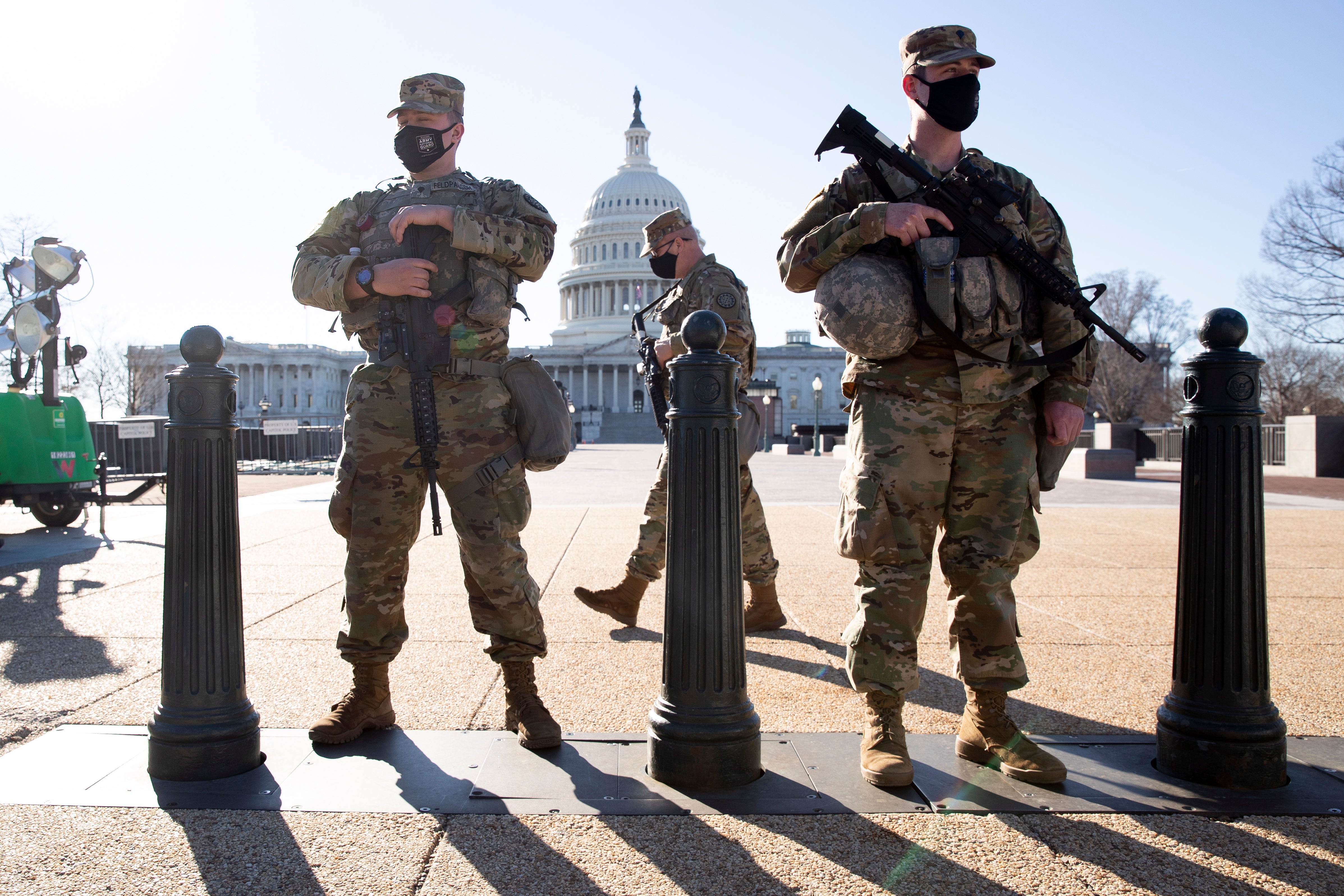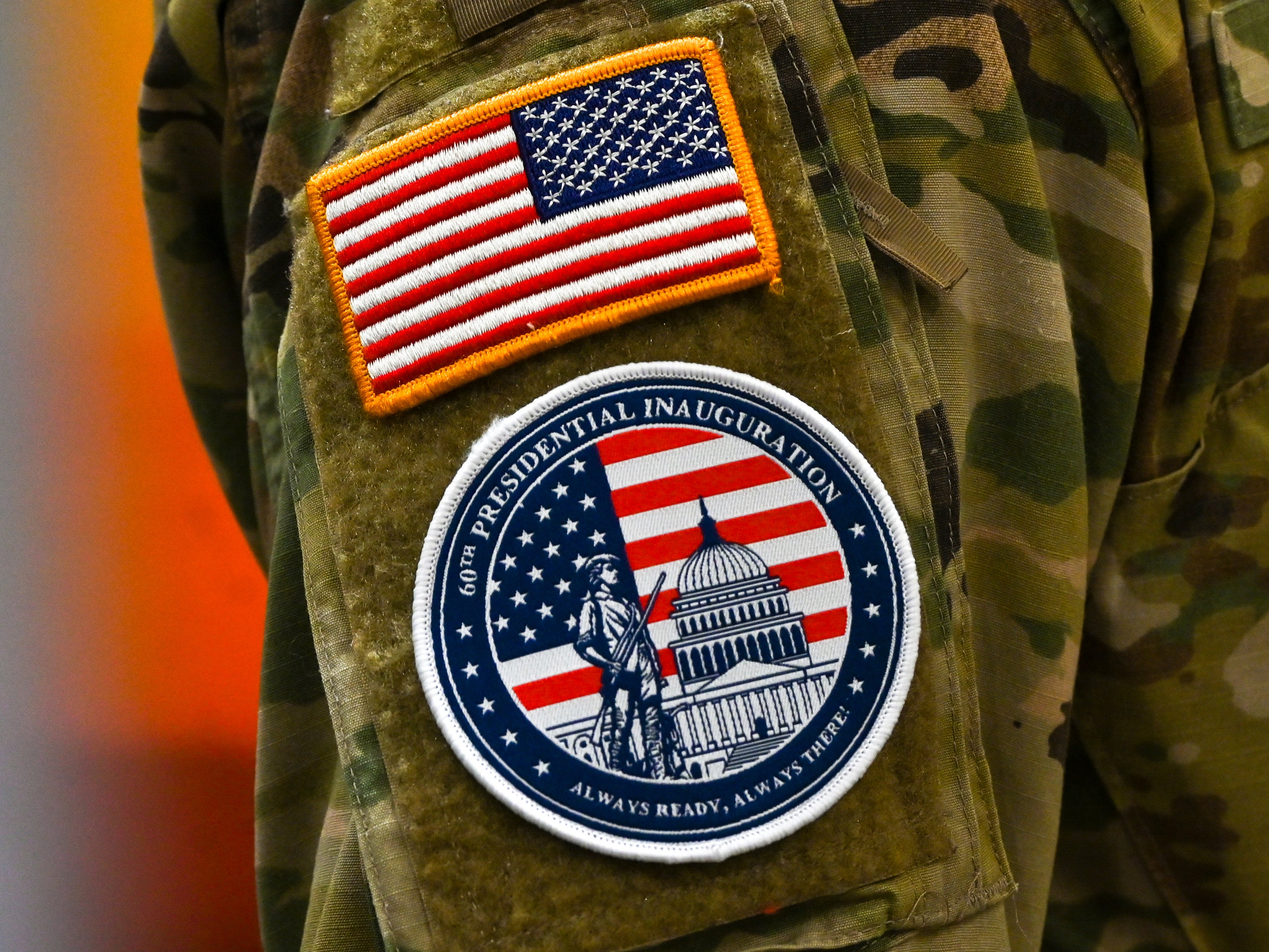Why National Guard deployed to Trump’s inauguration will be easier to spot this year
It is to make it clear they aren't police

Your support helps us to tell the story
From reproductive rights to climate change to Big Tech, The Independent is on the ground when the story is developing. Whether it's investigating the financials of Elon Musk's pro-Trump PAC or producing our latest documentary, 'The A Word', which shines a light on the American women fighting for reproductive rights, we know how important it is to parse out the facts from the messaging.
At such a critical moment in US history, we need reporters on the ground. Your donation allows us to keep sending journalists to speak to both sides of the story.
The Independent is trusted by Americans across the entire political spectrum. And unlike many other quality news outlets, we choose not to lock Americans out of our reporting and analysis with paywalls. We believe quality journalism should be available to everyone, paid for by those who can afford it.
Your support makes all the difference.When thousands of National Guard and law enforcement officers locked down Washington during protests and the January 6 riot four years ago, it was almost impossible to tell the difference between cops and troops.
Amid the blur of camouflage many found it difficult to spot who was who.
This year's inauguration should be different.
National Guard leaders have given the green light to the use of a special shoulder patch with the Guard motto “Always Ready, Always There," to ensure that people coming to the inauguration of President-elect Donald Trump on Monday will know who is who.
“It is to make sure it’s easier to identify who’s participating for the National Guard,” said Brig. Gen. Leland Blanchard II, adjutant general of the Washington, D.C., Guard. The patch, he added, will “connect each of the participants from the National Guard back to the mission set, back to what they’re doing and the importance of participating in this peaceful transition.”
The new red, white and blue patch also depicts a minuteman, long a symbol of the Guard that harkens back to the Revolutionary War. The key, said Army Col. Larry Doane, a senior Guard leader, was to provide a visible way to distinguish the troops.
About 87% of the Guard troops will be Army and 13% will be Air Force.

“It’s tough these days where it feels like every law enforcement agency and everybody out there wants to wear the same camouflage pattern that I’m wearing," Doane said. "There’s a very, very long tradition in our country about discomfort with the military policing a population, and we want to stay in step with that.”
make it clear they aren't policeOfficials say the U.S. government is far more prepared this year for any emergency or incident, but they also believe that America's transfer of power will be less violent and threatening than it was in 2021, when about 25,000 Guard troops descended on the city in the wake of the siege at the Capitol.
“After the inaugural four years ago, where there were very serious security concerns, the preparation for this event has been very robust and rigorous,” Army Secretary Christine Wormuth said.
About 7,800 Guard troops from more than 40 states and U.S. territories will be on duty, and they have already begun flowing into Washington. Blanchard said one change this year is that the troops are coming in a day or two earlier “so that we can ensure that as we’re building up, we’re again keeping those lines of communication clear, and that we’re not overwhelmed with a large number of folks coming in in a very short period of time.”
Having the swearing-in and parade indoors, due to the frigid weather, will likely cause some shifts in where troops may be positioned, but no other major changes because troops will still have to secure the area around the Capitol.
Across the city, a wide array of federal government, law enforcement and military officials have been meeting, planning and doing tabletop exercises for months.
The goal, said Blanchard, is to ensure that all the agencies are able to communicate clearly and consistently throughout the event. He said a lot of the exercises and discussions have focused on ensuring that everyone understands their specific roles and responsibilities, and that there will be rapid and clear communications if something unexpected happens.
The Guard troops will do crowd management, traffic control and other security, and there will be teams to monitor and respond to any chemical, biological or other explosive incident. They will help to staff 100 traffic control points and five subway stops.
“I feel very comfortable that we’ve done everything that we can do,” Blanchard said. “And, I think we’re going to have a great, peaceful transition of power. I’m excited again just to stand in our nation’s capital, along with a lot of other American citizens, and see this happen.”
Intelligence agencies are closely watching for any threats. So far, officials say they aren't seeing any significant risks, and at this point, they expect this inauguration will look more like those of eight, 12 or 16 years ago.
In January 2021, the country was in the depths of the COVID-19 pandemic. The streets were void of the crowds that normally line Pennsylvania Avenue for the parade and attendees were masked. Hotels and restaurants were struggling, so they provided easy housing and food for the Guard forces and law enforcement officers.
This time, the hotels and eateries will be packed. So Guard officials have identified other ways to house, feed and care for the troops who will pour in to help secure the city. They are expected to use a number of downtown buildings that will be largely vacant as federal employees telework over the coming days.